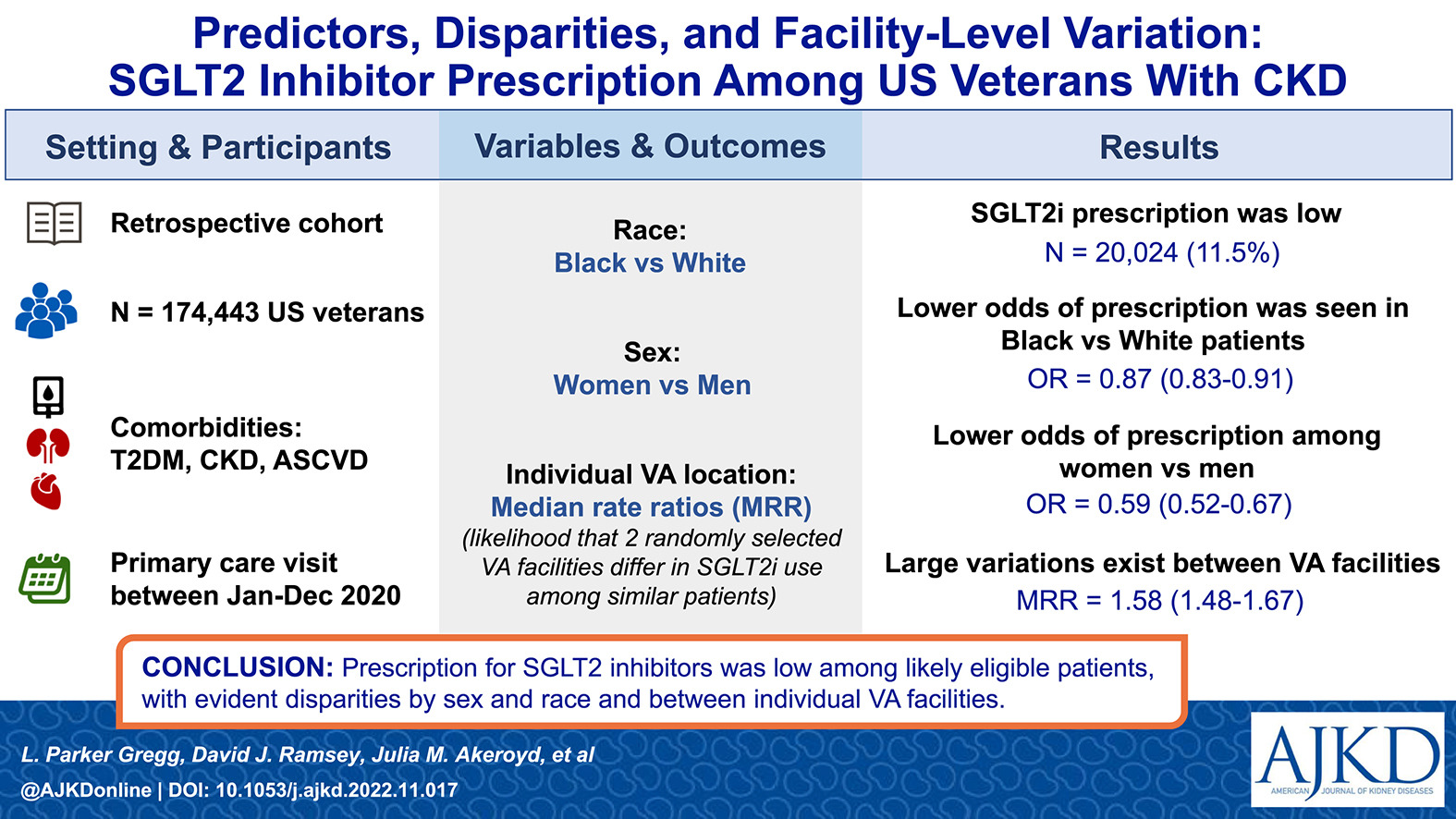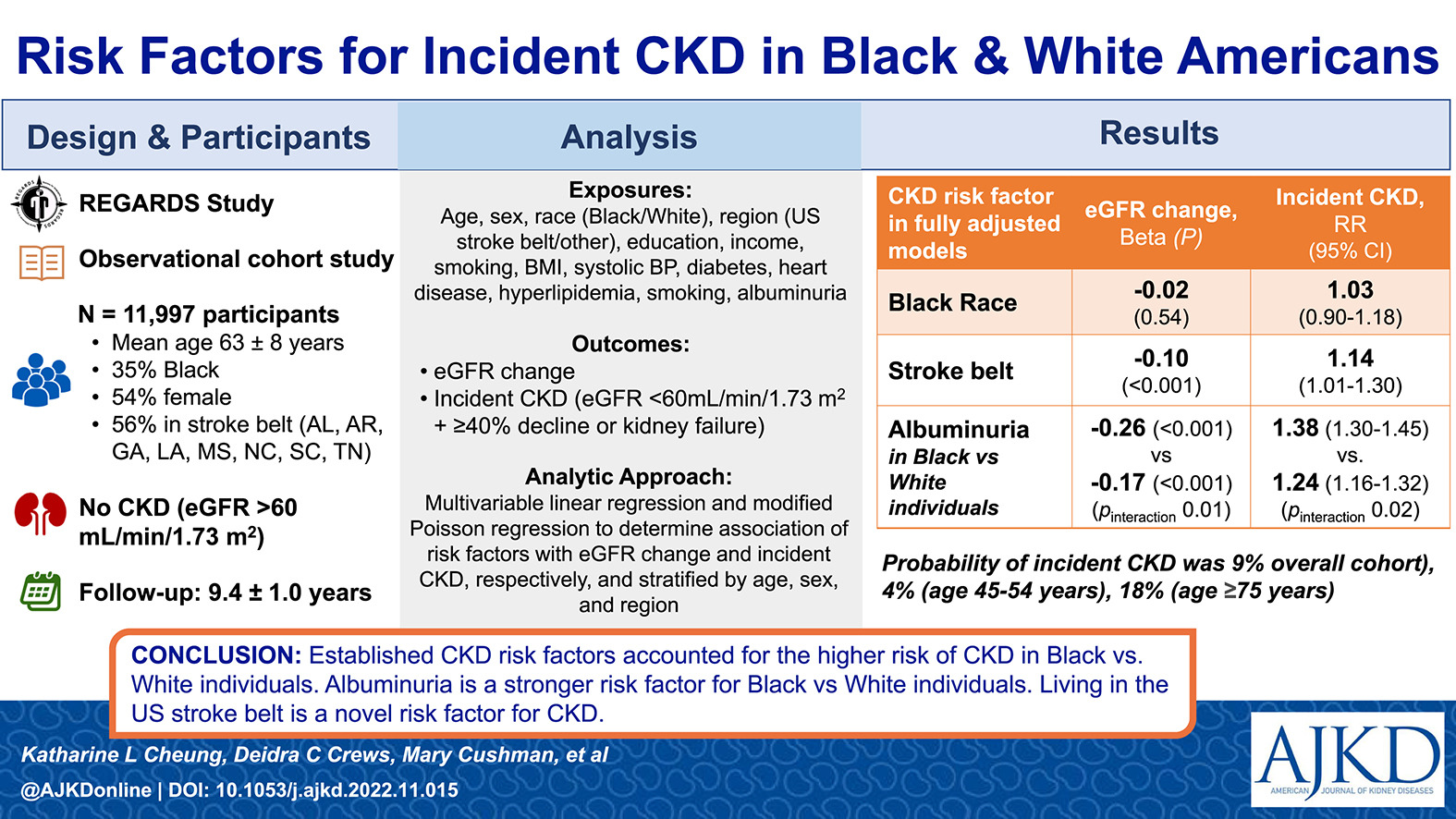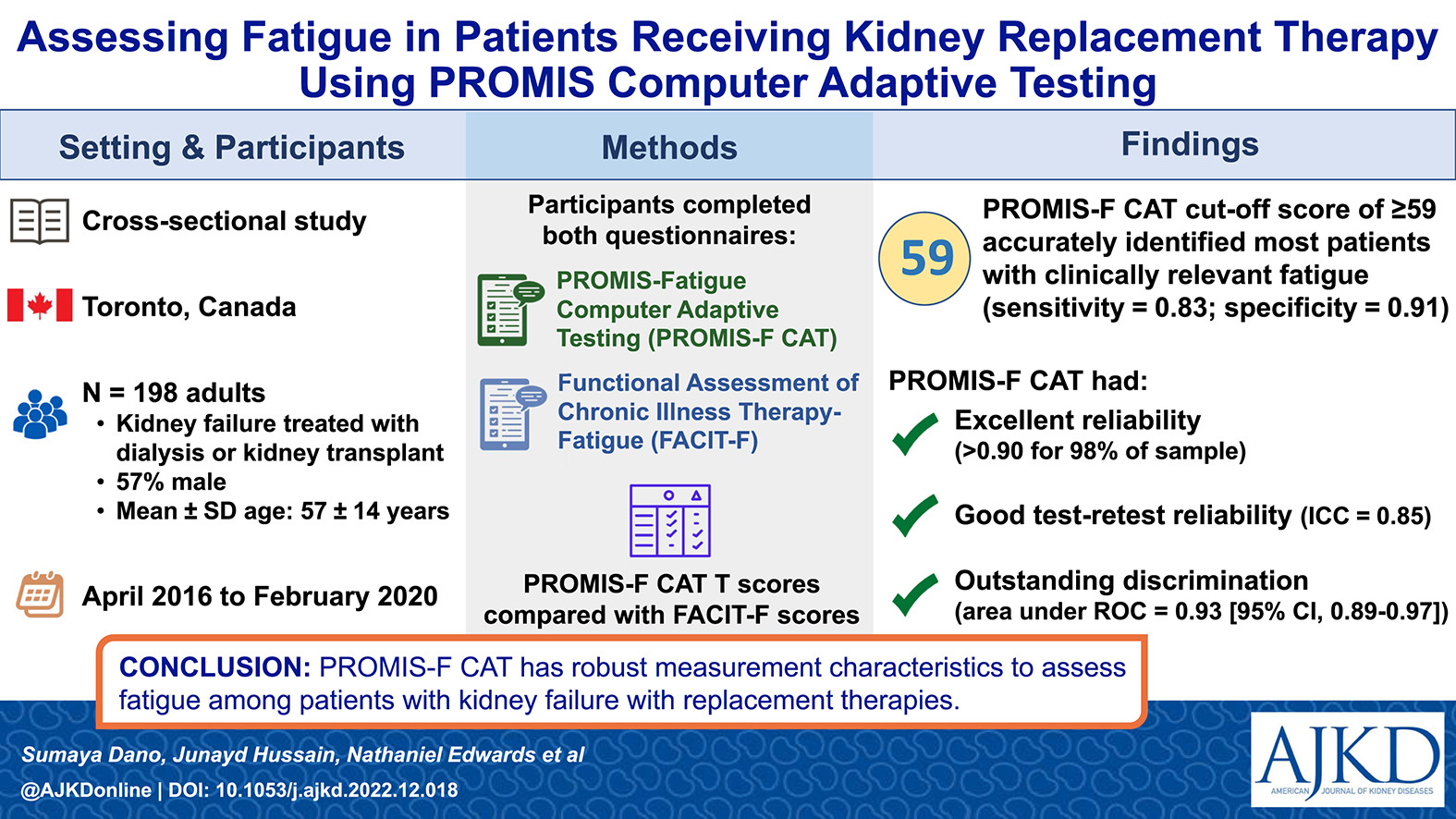Highlights from the July 2023 Issue
Editor’s Note: We asked authors of Original Investigations to provide short plain-language summaries that would briefly summarize what inspired their study, the basic approach taken, what was learned, and why it matters. We hope our readers will find this valuable in helping them keep up with the latest research in the field of nephrology. Highlights from the July 2023 issue:
Risk Factors for Incident CKD in Black and White Americans: The REGARDS Study by Katharine L. Cheung et al [OPEN ACCESS]
From the authors: In this longitudinal cohort study of Black and White adults at least 45 years of age followed for approximately 10 years, chronic kidney disease (CKD) developed in 9%, ranging from 4% of those 45-54 years old to 18% of those at least 75 years old. Systolic blood pressure, diabetes, heart disease, body mass index, and residence in the southeastern “stroke belt” were independent risk factors for CKD. Black individuals had higher incidence of CKD than White individuals, but this was attenuated after adjusting for traditional CKD risk factors. Albuminuria was a stronger risk factor for kidney disease in Black compared with White individuals.
DOI: 10.1053/j.ajkd.2022.11.015
Editorial: Unpacking Contributors to CKD Incidence and Progression: Time to Move Beyond Traditional Risk Factors by Panupong Hansrivijit et al [FREE]
Professional Fulfillment, Burnout, and Turnover Intention Among US Dialysis Patient Care Technicians: A National Survey by Laura C. Plantinga et al
From the authors: Dialysis patient care technicians (PCTs) are essential members of the hemodialysis care team. However, retention of dialysis PCTs is increasingly difficult. We conducted a survey of dialysis PCTs to understand their work experiences and found that more than half reported burnout (job-related mental, physical, and emotional exhaustion), and fewer than half felt fulfilled professionally. Nearly half indicated that they did not plan to still be working as dialysis PCTs in 3 years. Survey respondents identified low salary, lack of respect and support from other staff, and inadequate training as factors that should be addressed to improve dialysis PCT work experiences, retain staff, and, potentially, improve the quality and safety of care delivered by dialysis PCTs.
DOI: 10.1053/j.ajkd.2022.12.017
Editorial: Dialysis Technician Burnout: An Opportunity for Empowerment by Hanna Webb [FREE]
Assessing Fatigue in Patients Receiving Kidney Replacement Therapy Using PROMIS Computer Adaptive Testing by Sumaya Dano et al
From the authors: Patients receiving maintenance dialysis and those who have received a kidney transplant experience many symptoms, including fatigue. Currently, we do not routinely screen for fatigue, which often goes undiagnosed and untreated. Using questionnaires such as the Patient-Reported Outcome Measurement Information System–Fatigue Computer Adaptive Test (PROMIS-F CAT) can help routinely measure fatigue in clinical settings. PROMIS-F CAT relies on a small number of questions and may be more acceptable than longer, validated instruments, including the Functional Assessment of Chronic Illness Therapy–Fatigue (FACIT-F) questionnaire. We compared PROMIS-F CAT with FACIT-F to learn whether PROMIS-F CAT is sufficiently accurate and precise to use in the clinical setting. We found that PROMIS-F CAT is a potentially valuable tool for the clinical assessment of people with kidney failure receiving kidney replacement therapy.
DOI: 10.1053/j.ajkd.2022.12.018
Editorial: Measurement of Fatigue in Patients Receiving Kidney Replacement Therapy by Melandrea L. Worsley [FREE]
Acute Kidney Injury and Hair-Straightening Products: A Case Series by Alon Bnaya et al
From the authors: Exposure to environmental toxins may lead to acute kidney injury (AKI). Nevertheless, chemical products associated with kidney impairment are occasionally overlooked and underreported by clinicians. During a recent 4-year period, episodes of severe AKI following hair straightening have been described in healthy young women in Israel. Clinical symptoms, including abdominal pain, nausea, vomiting, and scalp irritation, appeared during or immediately after the procedure. In 30% of cases, a kidney biopsy was performed, demonstrating deposition of calcium oxalate crystals in the tubules and acute tubular injury. Kidney function recovered spontaneously in most patients. This case series suggest a possible association between hair straightening and AKI, which may in turn result from acute oxalate nephropathy.
DOI: 10.1053/j.ajkd.2022.11.016
Predictors, Disparities, and Facility-Level Variation: SGLT2 Inhibitor Prescription Among US Veterans With CKD by L. Parker Gregg et al 
DOI: 10.1053/j.ajkd.2022.11.017
Readmission and Mortality After Hospitalization With Acute Kidney Injury by Ivonne H. Schulman et al
DOI: 10.1053/j.ajkd.2022.12.008
The Impact of a Wearable Activity Tracker and Structured Feedback Program on Physical Activity in Hemodialysis Patients: The Step4Life Pilot Randomized Controlled Trial by Rakesh Malhotra et al [OPEN ACCESS]
From the authors: Patients receiving hemodialysis are known to have less physical activity. A sedentary lifestyle is associated with excess illness and death among those on dialysis. We performed a pilot randomized control trial to evaluate the effect of a structured feedback intervention coupled with a wearable activity tracking device to promote physical activity in patients receiving hemodialysis as compared with simply wearing an activity tracker. We found that implementation of a behavior feedback intervention to improve physical activity level is feasible and leads to a greater daily step count, which was sustained over 12 weeks, as compared with simply wearing an activity tracker without the accompanying intervention.
DOI: 10.1053/j.ajkd.2022.12.011
Kidney and Cardiovascular Effects of Canagliflozin According to Age and Sex: A Post Hoc Analysis of the CREDENCE Randomized Clinical Trial by Tae Won Yi et al [FREE]
From the authors: The CREDENCE trial demonstrated significant kidney benefits with canagliflozin in participants with diabetic kidney disease. We analyzed the data to see if the safety and efficacy of canagliflozin differed among three age groups (<60, 60-69, and ≥70 years) and between sexes. Canagliflozin reduced the risk of the primary outcome (kidney failure, doubling of serum creatinine concentration, death due to kidney or cardiovascular disease) similarly among the age groups and between sexes. The effect of canagliflozin on kidney outcomes was similar regardless of age or sex but was more pronounced in younger participants, who were at higher risk of these events. Our study demonstrates that canagliflozin appears to be similarly effective and safe among different age categories and between sexes.
DOI: 10.1053/j.ajkd.2022.12.015
Perspective from the July 2023 issue:
Fructose: A New Variable to Consider in SIADH and the Hyponatremia Associated With Long-Distance Running? by Richard J. Johnson et al
We discuss the new science of fructose and vasopressin, and how it may play a role in some of these conditions, as well as in the complications associated with rapid treatment (such as the osmotic demyelination syndrome). Studies to test the role of fructose could provide new pathophysiologic insights as well as novel potential treatment strategies for these common conditions.
DOI: 10.1053/j.ajkd.2023.01.443
On the Cover: Toxins are important preventable contributors to kidney injury. In this issue of AJKD, Bnaya et al identify glycolic acid as a potential toxin in hair-straightening products associated with severe acute kidney injury. Glycolic acid is also present in snail mucus, which was historically used to treat burns and other wounds.
The photograph “Snail” by Raphaël Quinet is released on Flickr under the CC BY 2.0 license.
Special thanks to Editorial Intern Jeffrey Ha drafting the cover blurb for this issue
SPECIAL COLLECTION: RESEARCH ACROSS THE WORLD
This special collection highlights kidney disease research from around the world. Articles in this collection will be freely available until July 15, 2023.









Leave a Reply